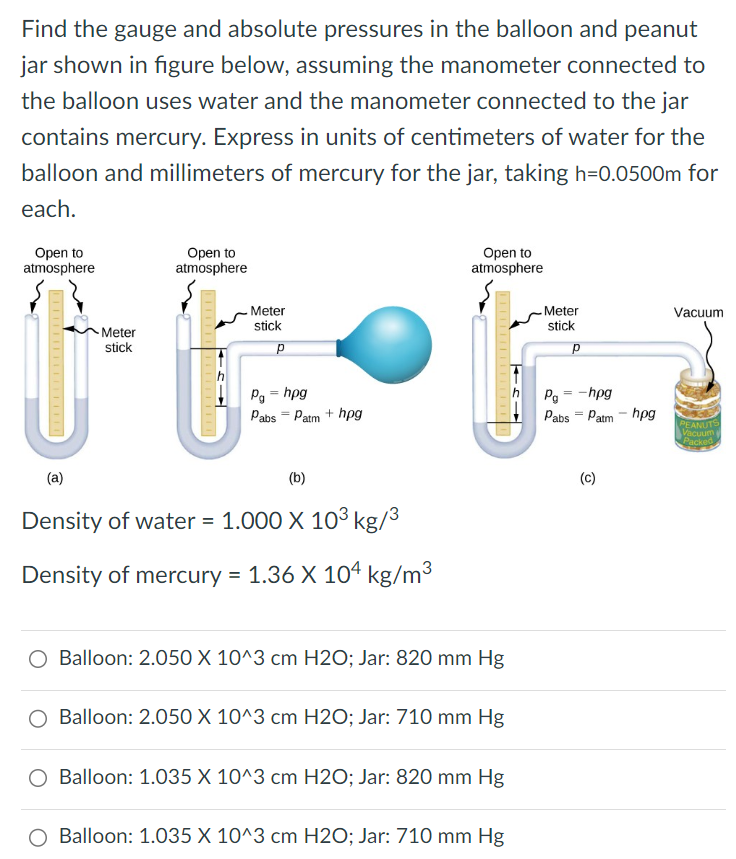Find the gauge and absolute pressures in the balloon and peanut jar shown in figure below, assuming the manometer connected to the balloon uses water and the manometer connected to the jar contains mercury. Express in units of centimeters of water for the balloon and millimeters of mercury for the jar, taking h = 0. 0500 m for each. (a) (b) (c)Density of water = 1. 000×103 kg/3 Density of mercury = 1. 36×104 kg/m3 Balloon: 2. 050 X 10^3 cm H2O; Jar: 820 mm Hg Balloon: 2. 050×10^3cm H2O; Jar: 710mmHg Balloon: 1. 035 X 10^3 cm H2O; Jar: 820 mm Hg Balloon: 1. 035×10∧3cmH2O; Jar: 710mmHg
